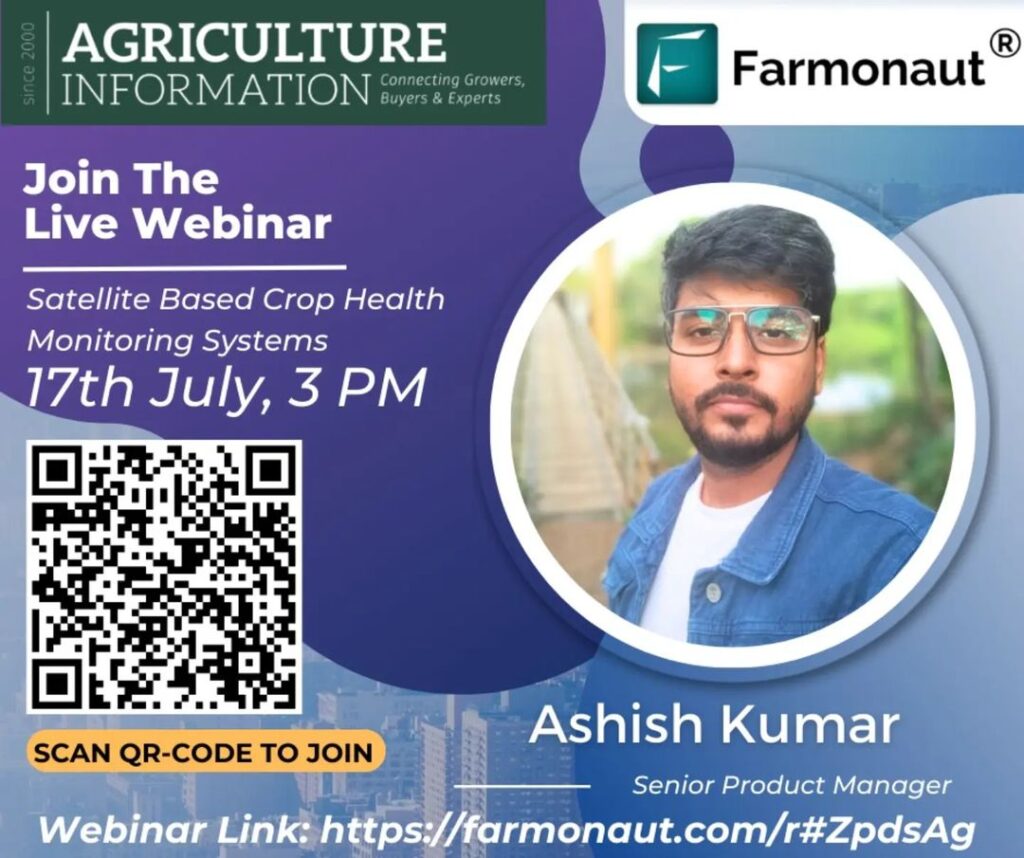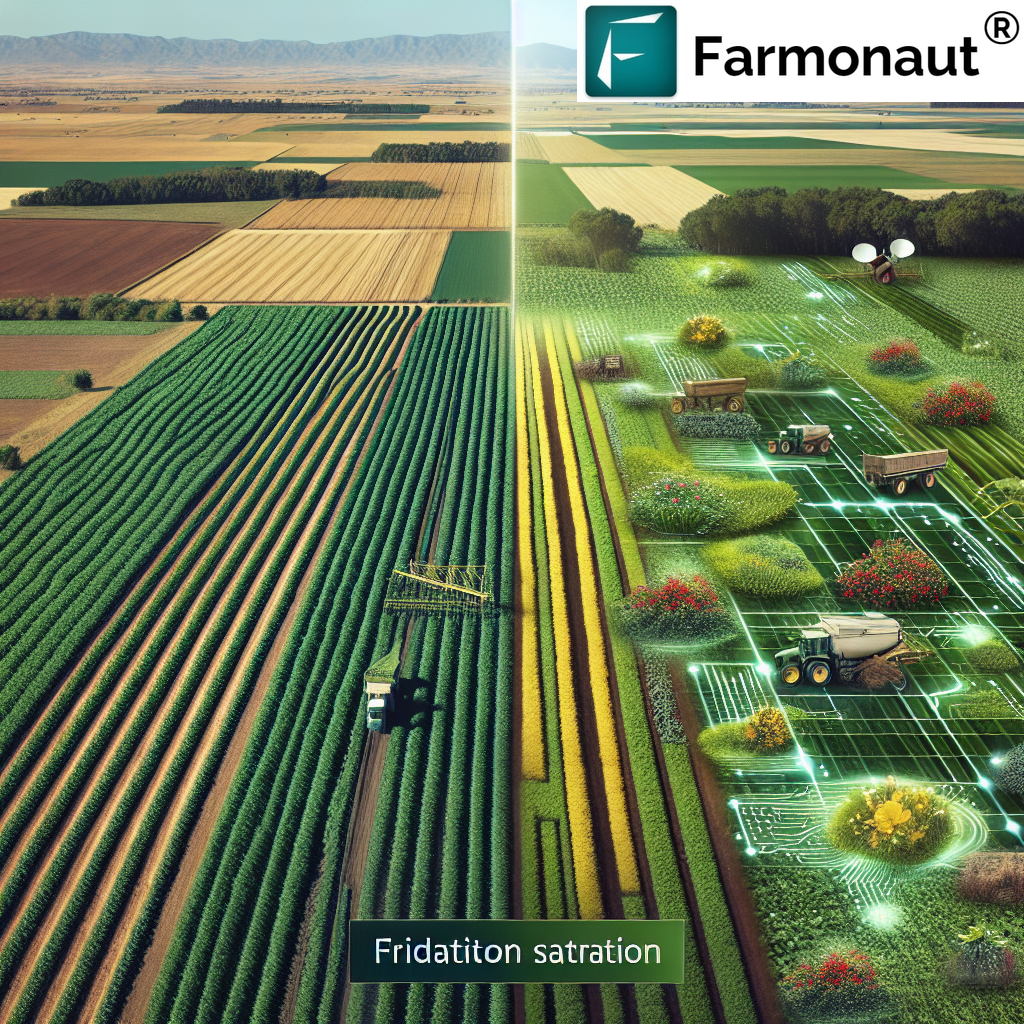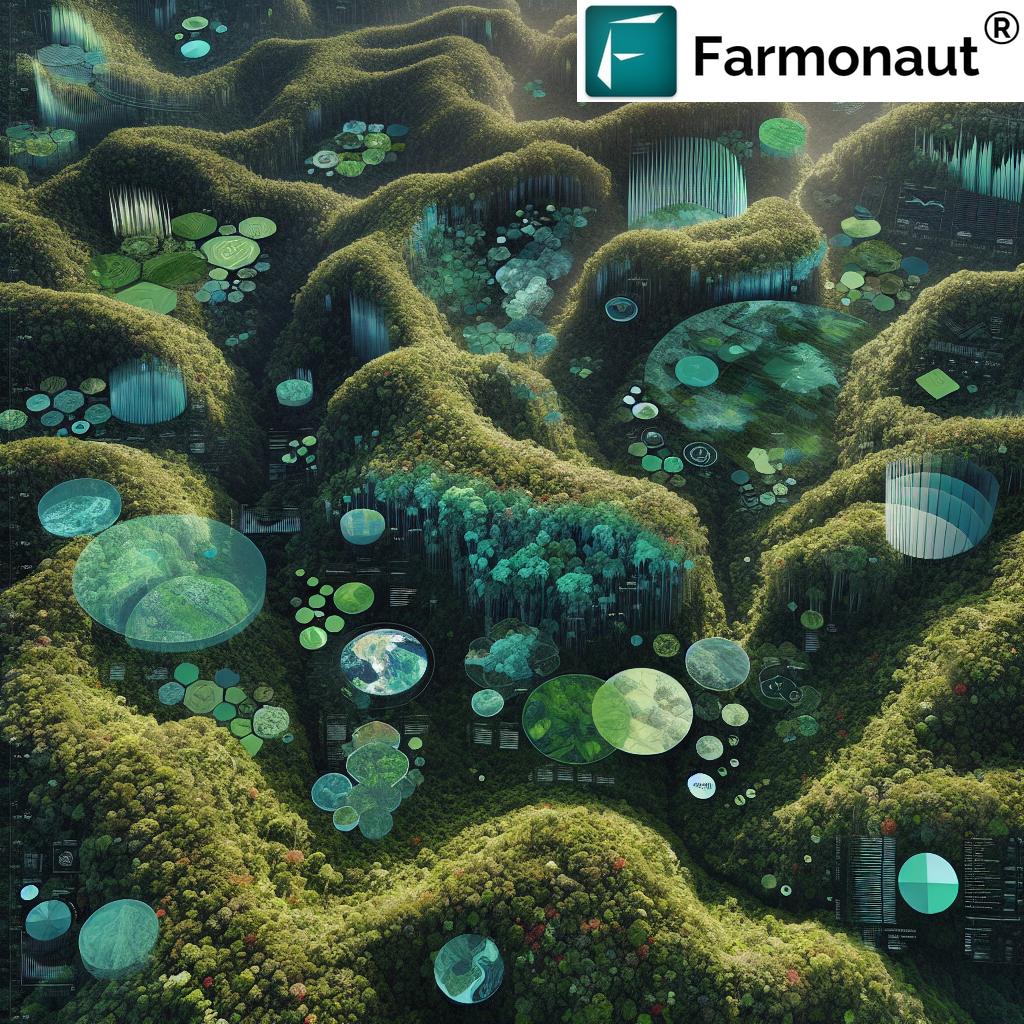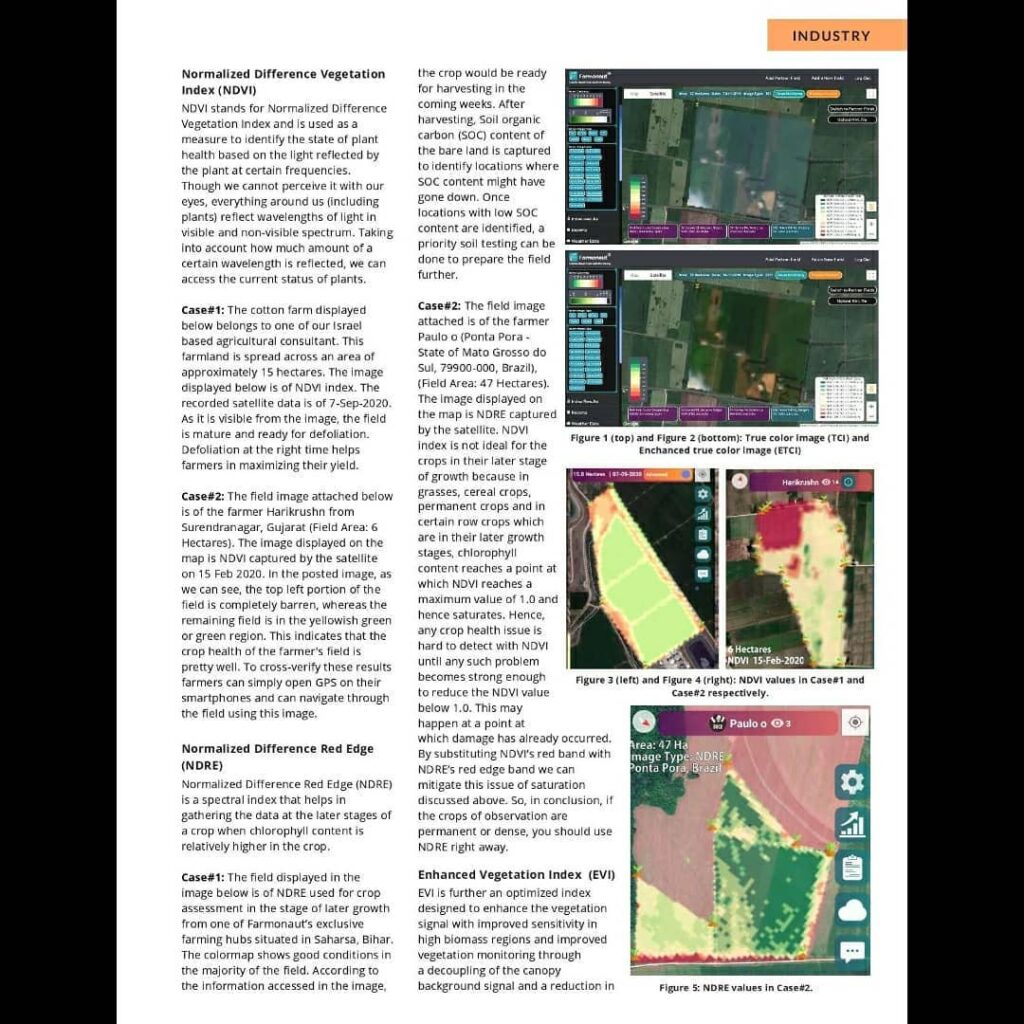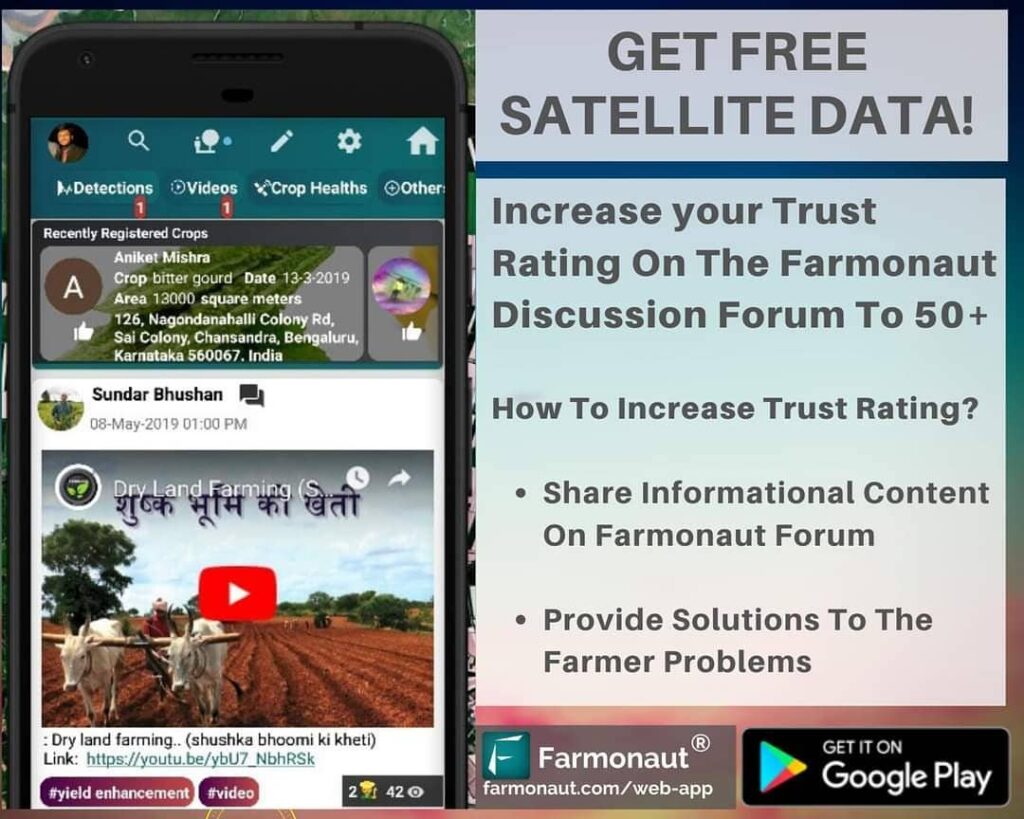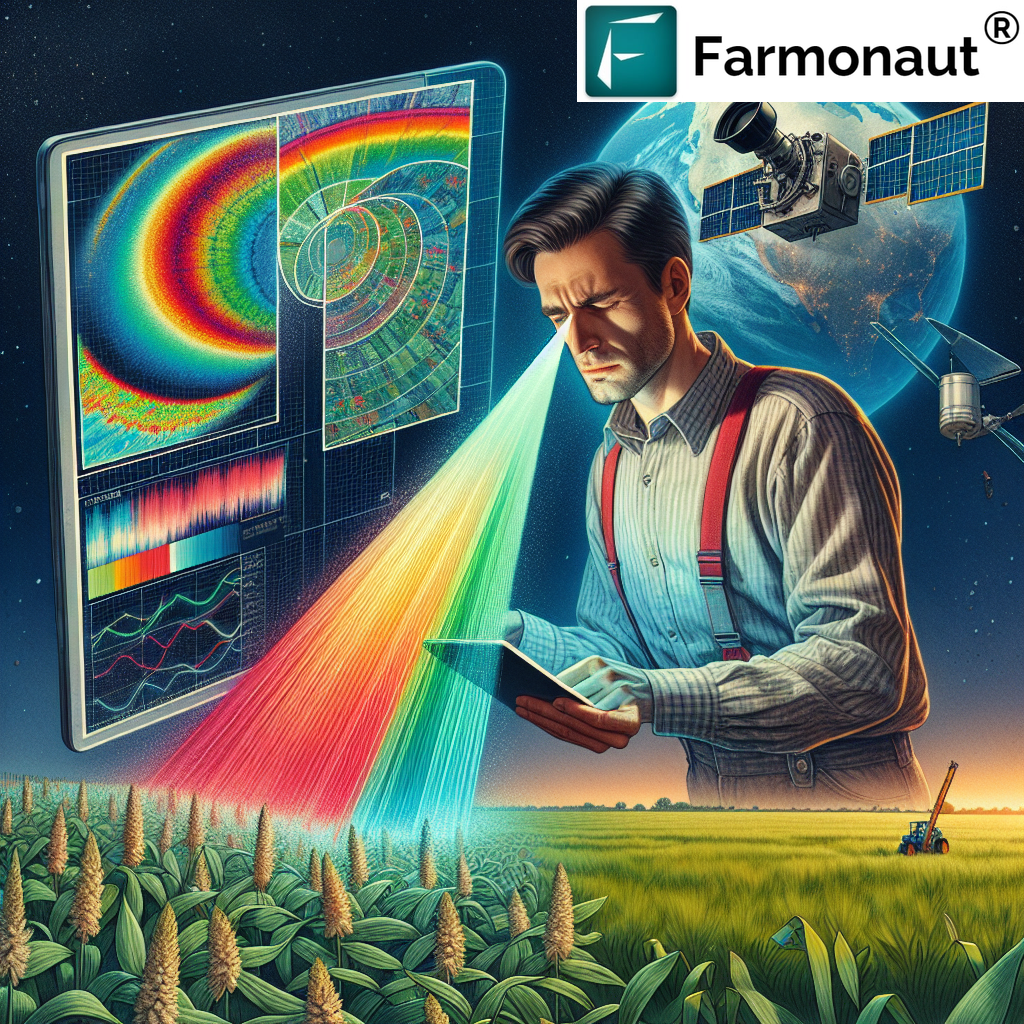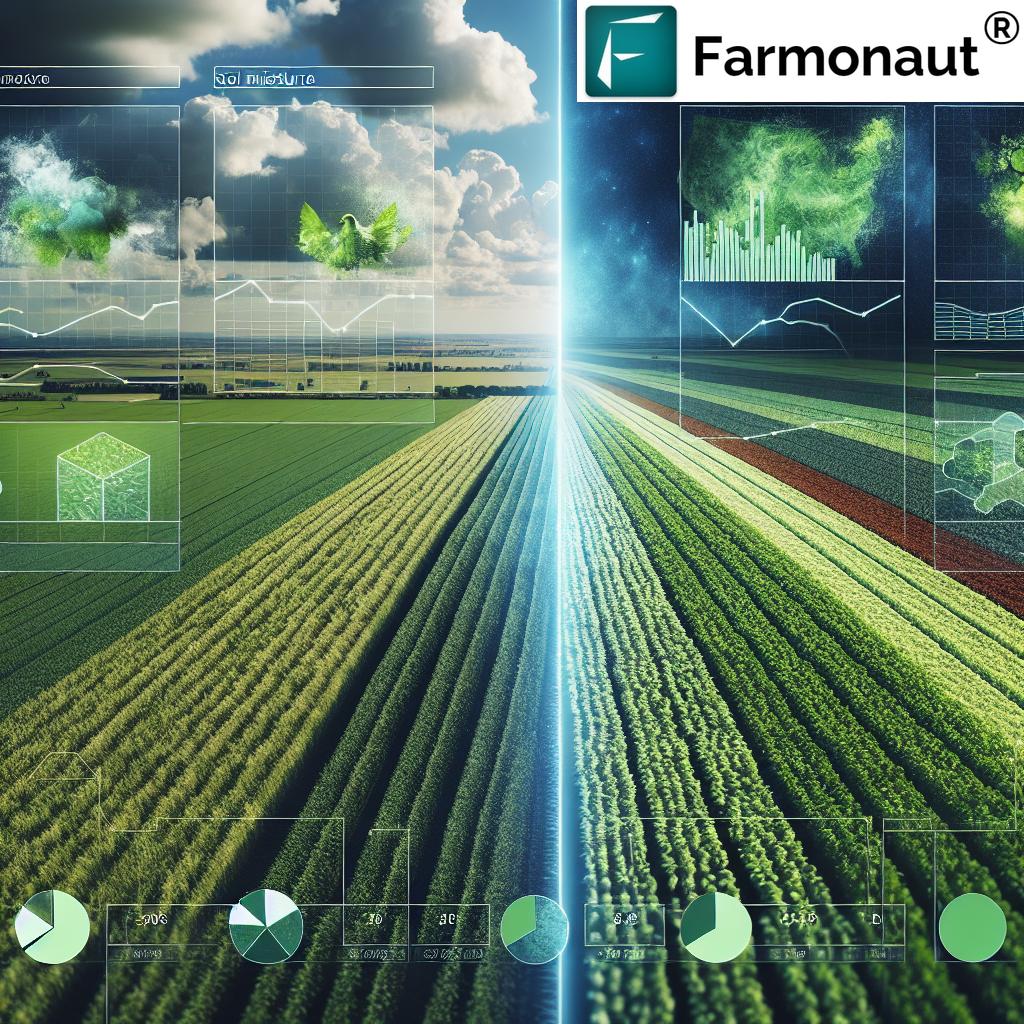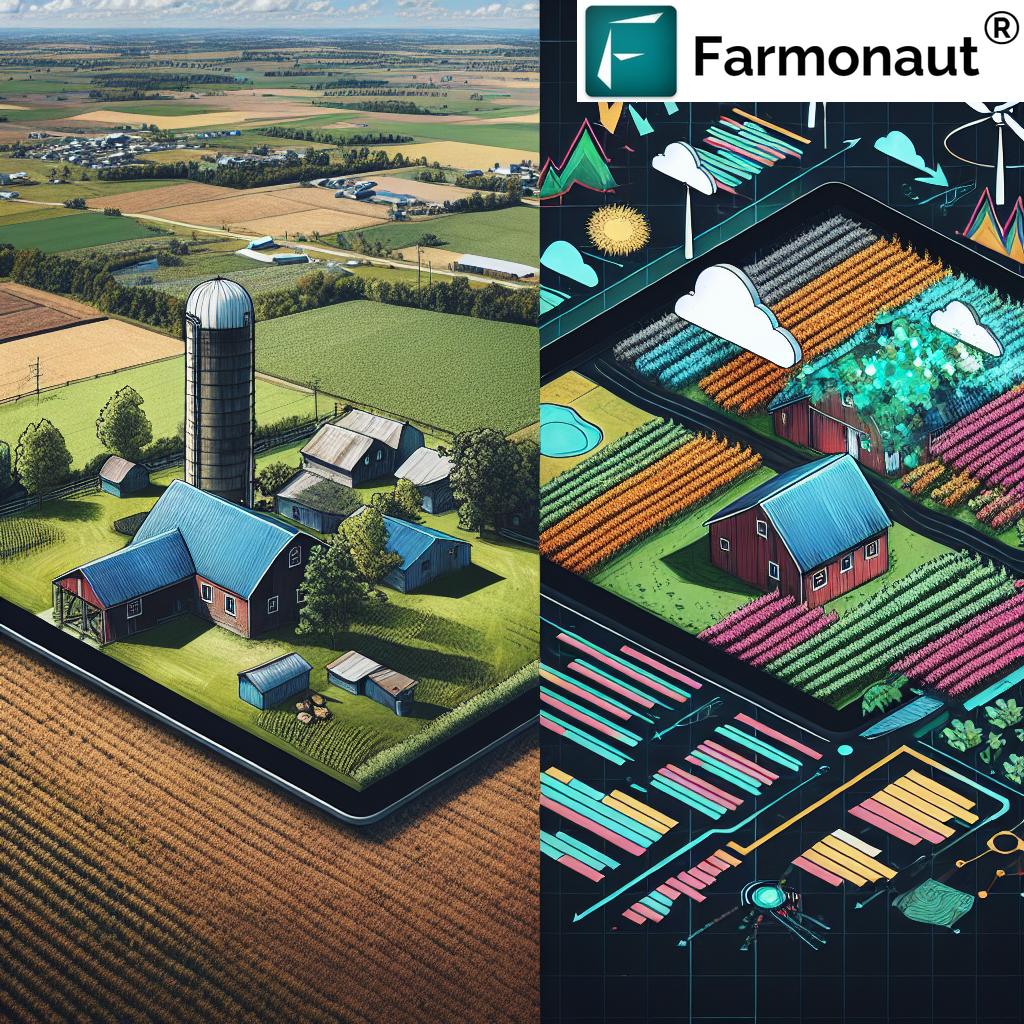Revolutionizing Cotton Farming with Satellite Technology: A Case Study from Israel
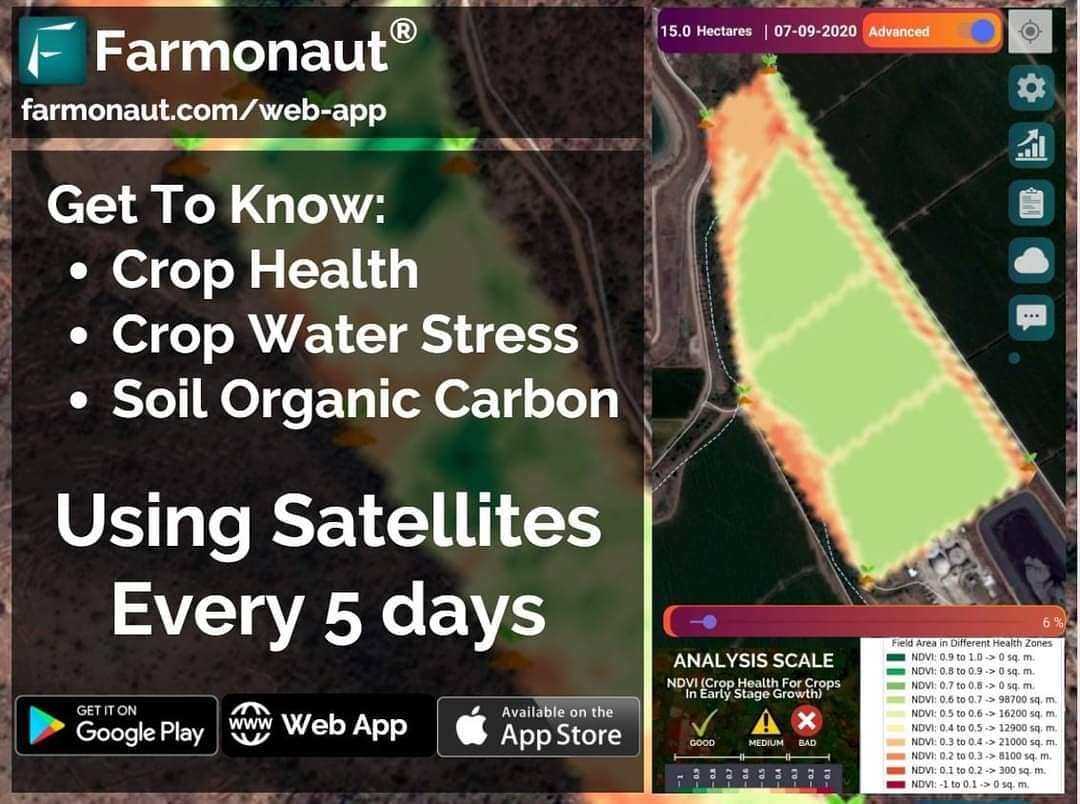
At Farmonaut, we’re committed to transforming the landscape of modern agriculture through cutting-edge technology and data-driven insights. Today, we’re excited to share a compelling case study that showcases the power of our satellite-based farm management solutions in action. Join us as we explore how one of our farmers in Israel is leveraging our technology to optimize their cotton production and maximize yields.
The Power of Precision Agriculture in Cotton Farming
Cotton farming has long been a cornerstone of agriculture in many regions, including Israel. However, the challenges faced by cotton farmers are numerous and complex. From managing water resources efficiently to timing crucial interventions like defoliation, every decision can significantly impact the final yield and quality of the crop. This is where precision agriculture, powered by remote sensing technology, comes into play.
Our case study focuses on a 15-hectare cotton field in Israel, monitored using the Farmonaut app. The farmer has been utilizing our platform for over a year, gaining valuable insights into their crop’s health and development throughout the growing season.
Understanding NDVI: The Key to Crop Health Monitoring
One of the most powerful tools in our arsenal is the Normalized Difference Vegetation Index (NDVI). NDVI is a remote sensing technique that uses satellite imagery to assess the health and vigor of vegetation. By measuring the difference between near-infrared light (which healthy vegetation strongly reflects) and red light (which vegetation absorbs), we can generate a numerical value that indicates the overall health of the crop.
In our case study, the NDVI image captured on September 7, 2020, reveals crucial information about the cotton field’s status. Let’s break down what this means for our farmer and how it guides their decision-making process.
Interpreting the NDVI Data
The NDVI image of our Israeli cotton field shows a predominantly mature crop, indicating that it has reached its peak growth stage. This information is vital for the farmer as it helps them determine the optimal time for crucial interventions, particularly defoliation.
Why Timing Matters in Cotton Defoliation
Defoliation is a critical step in cotton production. It involves applying chemicals to remove leaves from the cotton plants, preparing them for harvest. The timing of this process is crucial for several reasons:
- Yield Optimization: Defoliating at the right time ensures that the maximum number of bolls have opened, maximizing the harvestable yield.
- Fiber Quality: Proper timing prevents leaf staining of the cotton fibers, maintaining high quality.
- Harvest Efficiency: Removing leaves facilitates easier and more efficient mechanical harvesting.
- Pest Management: Defoliation can help reduce the habitat for late-season insect pests.
By using Farmonaut’s NDVI data, our farmer can pinpoint the ideal moment for defoliation with unprecedented accuracy. This level of precision was previously unattainable without extensive manual field scouting, which is both time-consuming and less comprehensive than satellite-based monitoring.
The Farmonaut Advantage: Beyond NDVI
While NDVI is a powerful tool, it’s just one part of the comprehensive suite of solutions we offer at Farmonaut. Our platform integrates various data sources and advanced analytics to provide farmers with a holistic view of their operations. Here’s how our technology stands out:
| Feature | Farmonaut Satellite System | Drone-based Monitoring | IoT-based Farm Monitoring |
|---|---|---|---|
| Coverage Area | Large-scale (entire farms) | Limited by flight time and regulations | Limited by sensor placement |
| Frequency of Data Collection | Regular (every few days) | As needed, but requires manual operation | Continuous, but localized |
| Initial Investment | Low (subscription-based) | High (equipment costs) | Moderate to High (sensor costs) |
| Ease of Use | High (accessible via app) | Requires skilled operators | Requires technical setup and maintenance |
| Data Analysis | Advanced AI-driven insights | Varies based on software | Often requires additional processing |
As you can see, our satellite-based system offers unparalleled coverage, consistency, and ease of use compared to other farm monitoring technologies. This makes it an ideal solution for farmers of all scales, from small family-run operations to large industrial farms.
Implementing Precision Agriculture in Cotton Farming
Now that we’ve established the power of satellite-based monitoring, let’s delve deeper into how our Israeli farmer is using this technology to enhance their cotton production throughout the growing season.
1. Early Season Management
In the early stages of cotton growth, our farmer uses Farmonaut’s NDVI data to:
- Assess Emergence: Identifying areas of poor germination or emergence allows for targeted replanting or adjustments to planting practices for future seasons.
- Monitor Early Growth: Detecting variations in early-season vigor helps in addressing issues like soil compaction, nutrient deficiencies, or pest pressures promptly.
- Optimize Irrigation: By analyzing soil moisture data alongside NDVI, the farmer can fine-tune irrigation schedules to promote strong, uniform plant establishment.
2. Mid-Season Management
As the cotton crop develops, our platform continues to provide valuable insights:
- Nutrient Management: NDVI maps reveal areas of nutrient stress, allowing for targeted fertilizer applications and reducing overall input costs.
- Pest and Disease Detection: Sudden changes in NDVI can indicate pest infestations or disease outbreaks, enabling early intervention.
- Growth Regulation: Monitoring plant vigor helps in deciding when and where to apply growth regulators, ensuring optimal plant structure for maximum yield potential.
3. Late-Season Management and Harvest Preparation
In the final stages of the cotton crop’s lifecycle, our technology proves invaluable for:
- Defoliation Timing: As demonstrated in our case study, NDVI data helps determine the optimal timing for defoliation, maximizing yield and quality.
- Harvest Planning: By providing a clear picture of crop maturity across the field, farmers can plan their harvest operations more efficiently.
- Yield Estimation: Advanced algorithms use NDVI and other satellite data to provide accurate yield estimates, aiding in logistics and marketing decisions.
The Broader Impact of Precision Agriculture
While our case study focuses on cotton farming in Israel, the implications of this technology extend far beyond a single crop or region. At Farmonaut, we’re witnessing the transformative power of precision agriculture across various agricultural sectors worldwide.
Environmental Sustainability
By enabling more precise management of resources like water and fertilizers, precision agriculture significantly reduces the environmental footprint of farming operations. This is particularly crucial in regions facing water scarcity or soil degradation issues.
Economic Efficiency
For farmers, the ability to optimize inputs and maximize yields translates directly to improved profitability. In an era of tightening margins and increasing global competition, these efficiencies can make the difference between a thriving farm and one that struggles to survive.
Food Security
As the global population continues to grow, the need for efficient, high-yield agriculture becomes ever more pressing. Precision farming technologies like those offered by Farmonaut play a crucial role in meeting this challenge, helping to ensure food security for future generations.
The Future of Farming with Farmonaut
Our journey with precision agriculture is just beginning. As we continue to refine our technologies and expand our services, we’re excited about the possibilities that lie ahead. Here are some of the innovations we’re working on:
1. Advanced AI and Machine Learning
We’re developing more sophisticated AI models that can predict crop issues before they become visible, allowing for even more proactive farm management.
2. Integration with IoT Devices
While our satellite-based system offers numerous advantages, we recognize the value of ground-level data. We’re working on seamless integration with IoT sensors to provide an even more comprehensive view of farm conditions.
3. Blockchain-Based Traceability
For crops like cotton, where traceability is increasingly important, we’re developing blockchain solutions that can track the product from field to fabric, ensuring transparency and authenticity throughout the supply chain.
4. Climate-Smart Agriculture
As climate change presents new challenges to farmers, we’re enhancing our platform to provide insights on adapting to changing weather patterns and implementing climate-resilient farming practices.
Join the Precision Agriculture Revolution
The case of our Israeli cotton farmer is just one example of how Farmonaut is transforming agriculture. Whether you’re managing a small family farm or overseeing large-scale agricultural operations, our technology can help you make more informed decisions, optimize your resources, and increase your yields.
Ready to experience the power of satellite-based farm management for yourself? Here’s how you can get started:
- Download the Farmonaut app from the Google Play Store or the Apple App Store.
- Access our web application at https://farmonaut.com/app_redirect.
- For developers interested in integrating our technology into their own solutions, check out our API documentation.
Join us in revolutionizing agriculture, one field at a time. With Farmonaut, the future of farming is here, and it’s more precise, efficient, and sustainable than ever before.
Subscribe to Farmonaut
Ready to take your farming to the next level? Subscribe to Farmonaut today and unlock the full potential of your fields.
Frequently Asked Questions (FAQ)
To help you better understand our technology and its applications, we’ve compiled a list of frequently asked questions:
Q1: What is NDVI, and why is it important for farming?
A: NDVI (Normalized Difference Vegetation Index) is a remote sensing technique that measures the health and vigor of vegetation. It’s important for farming because it provides a quick and accurate assessment of crop health, allowing farmers to make informed decisions about irrigation, fertilization, and pest management.
Q2: How often does Farmonaut update its satellite imagery?
A: The frequency of updates depends on the subscription plan, but typically ranges from daily to weekly updates. This ensures that farmers have access to the most current data for their decision-making.
Q3: Can Farmonaut be used for crops other than cotton?
A: Absolutely! While our case study focused on cotton, Farmonaut’s technology is applicable to a wide range of crops, including grains, fruits, vegetables, and more. The platform can be customized to provide insights specific to different crop types.
Q4: How accurate are Farmonaut’s yield predictions?
A: Our yield predictions are highly accurate, typically within 5-10% of actual yields. However, it’s important to note that external factors like extreme weather events can impact final yields.
Q5: Is Farmonaut suitable for small-scale farmers?
A: Yes, Farmonaut is designed to be accessible and beneficial for farmers of all scales. Our subscription model and user-friendly app make it easy for small-scale farmers to adopt precision agriculture techniques.
Q6: How does Farmonaut compare to drone-based farm monitoring?
A: While drones can provide high-resolution imagery, Farmonaut’s satellite-based system offers broader coverage, more frequent updates, and doesn’t require specialized equipment or operators. This makes it more cost-effective and easier to implement for most farmers.
Q7: Can Farmonaut help with organic farming practices?
A: Yes, Farmonaut’s insights are valuable for organic farmers as well. Our technology can help monitor crop health, detect pest or disease issues early, and optimize resource use, all of which are crucial in organic farming systems.
Q8: How secure is the data collected by Farmonaut?
A: We take data security very seriously. All data collected and stored by Farmonaut is encrypted and protected according to industry-standard security protocols. We never share individual farm data without explicit permission from the farmer.
Q9: Does Farmonaut offer customer support?
A: Yes, we provide comprehensive customer support to help you get the most out of our platform. This includes technical assistance, interpretation of data, and guidance on implementing precision agriculture techniques.
Q10: Can Farmonaut integrate with other farm management software?
A: Yes, Farmonaut offers APIs that allow for integration with other farm management tools. For more information, please check our API documentation.
We hope this FAQ section has answered some of your questions about Farmonaut and precision agriculture. If you have any further queries, don’t hesitate to reach out to our support team. We’re here to help you revolutionize your farming practices and achieve sustainable, profitable agriculture.
Join us in shaping the future of farming. With Farmonaut, precision agriculture is no longer a distant dream—it’s a powerful reality at your fingertips.


